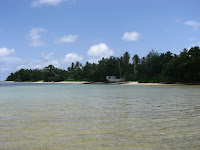Other Gods
They saw the mound
of black and white plumes
hunched back of a giant ostrich
kirinyaga, said the Kikuyus
kii’nyaa, said the Kambas
two tongues, two tribes, One Faith!
Blending with the skies
veiled from prying eyes
Unmanifest, it stood there
somewhere, above the treeline
at daybreak, when the clouds parted
as sheers peeled by temple priest
marbled Idols were revealed
in a rare darshan to believers – all
The vision:
of snow-clad peaks on dark massif
rising from the Equator floor -
of Day and Night
of Light and Darkness
in that one sight!
The resting place:
Of Creator Ngai, Lord of Nature
Revered and feared…
The houses they built facing the Mount
lore they wove round the slopes
Farms they laid at His feet, crops at the altar
An offering –
without disturbing His creed.
Cedar, oak, bamboo, redwood
Elephant, buffalo, antelope, turaco
Gladioli, violets, orchids, and ferns
Embellishments, they preserved in piety.
Centre of Universe, it was
for the First Man
until…
baptized, bastardized by Outsiders
seeking to conquer, demystify
yet another peak to be scaled
that lent their land its foreign name!
Born of the Great Rift
Of juices spewed from Earth’s womb
Rising from the Ashes…
Once tallest of them all
Towering above Kilimanjaro, Everest even
Since then, weathered, eroded
Grand, it stands, nonetheless –
Nemesis of the mountaineer clan
To the subjects, still
the sacred ‘Mountain of Brightness
to be worshipped –
this Abode of God
The Almighty African Himalayas !
When men and mountain meet
During the day, as I looked above the treeline on the opposite edge of the salt lick, from my balcony, I wouldn’t have suspected that the grey-blue sky speckled with clouds could hide a massive secret. But at daybreak, as one rubbed the sleep off ones eyes, dream-like an apparition of snow-draped mountains loomed in the near distance. In a rare gesture, Mount Kenya , the Mountain of God


















































